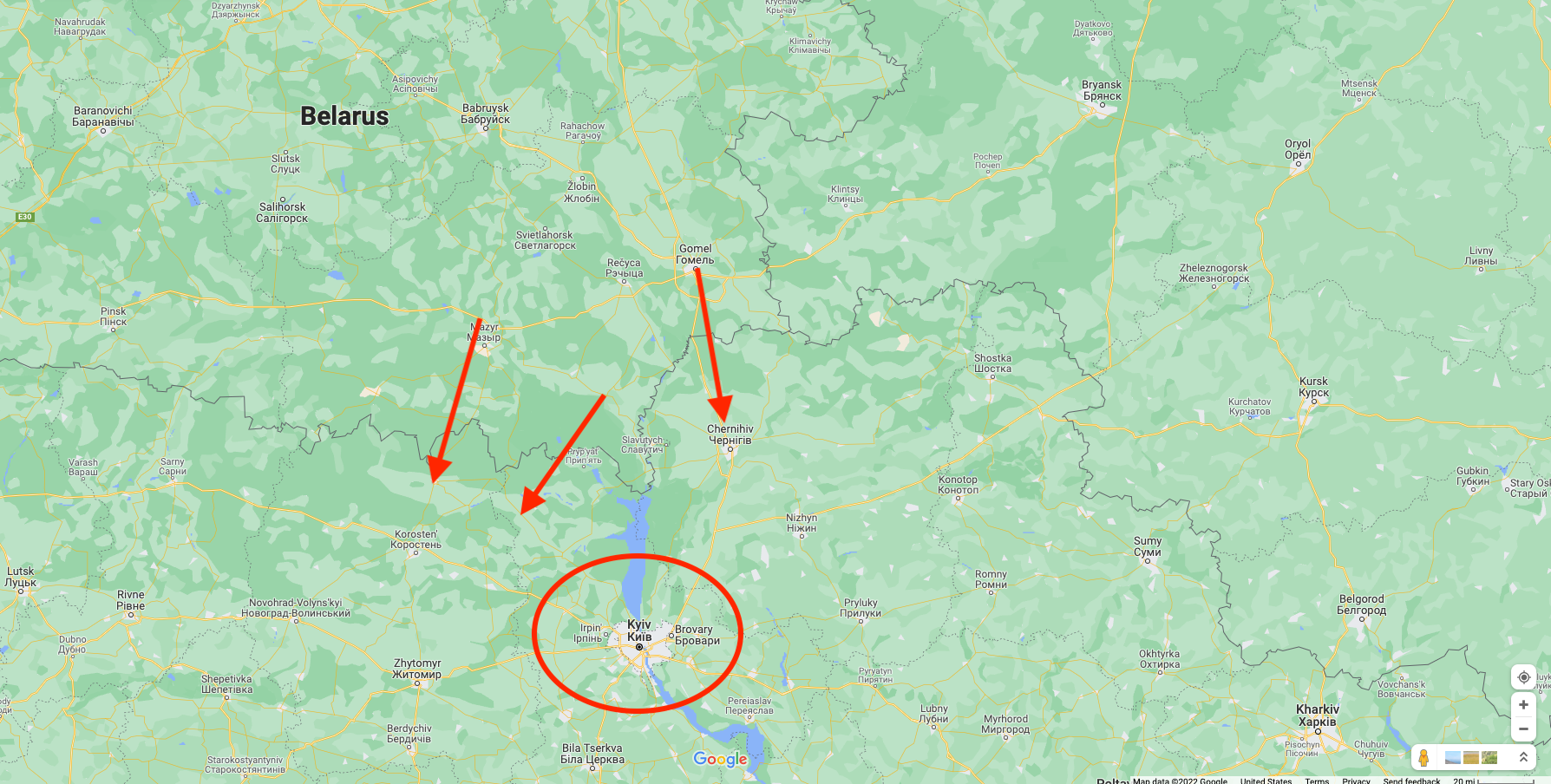What is underlying the Biden administration’s new sense of urgency on Thursday over a possible Russian re-invasion of Ukraine?
I can report that Russian and Belarusian forces have significantly advanced their preparation within the last 24 hours for a rapid offensive against Kyiv.
Final elements of northern Russia-based airborne and other mechanized-maneuver forces have been moved to the Belarusian border with northern Ukraine. They join very capable electronic warfare forces and armor, air defense, and missile forces. Strike fighter and helicopter units are also nearby.
From west to east, as on the map below, these forces are centered on the city of Mazyr, along the P35 highway that borders the Palieski State Radioecological Reserve, a post-Chernobyl explosion fallout area, and the city of Gomel. Russian forces recently deployed, then dismantled a pontoon bridge across the Pripyat River within the Palieski exclusion zone, approximately 5 miles from the border. This bridge could be rapidly redeployed. There are fears that the bridge-laying operation served as a practice run.
Top line: Massed Russian forces are at jump-off positions toward a lightning strike on Kyiv. This disposition of forces would feasibly allow the encirclement of Kyiv along both sides of the Dnieper River, which bisects the Ukrainian capital.

Russian-Belarusian forces north of Kyiv could, and likely would, be supported by Russian combined arms forces, which are now massed along Ukraine’s eastern border with Russia.
What of timing?
Well, it was always unlikely that Russian President Vladimir Putin would play to Western suspicions over a specific date for an attack.
Still, the now ice-covered marshes that define the northern approaches to Kyiv will soon begin to melt. Contrary to those who suggest that this temperature-weather dynamic does not matter to Russian mechanized and armored forces, it very much does matter. Russian ground forces have been forward deployed for months now, their always-low morale likely sapped. Trudging through mud under fire is no commander’s preference. Armored vehicles that have suffered damage will also struggle to move through marshes.
Moreover, from its strategic nuclear doctrine on down, Russian offensive doctrine places a very high priority on speed. Russian commanders will further prioritize speed of “movement to objective” against Ukraine, knowing that a slow advance will exacerbate the utility of Western intelligence targeting support to Ukrainian forces. And at a political level, Putin will assess a rapid encirclement of Kyiv and dislocation of the Ukrainian government as crucial. A bloody, bogged-down war with Ukraine will encourage the West’s unity in favor of massive sanctions, compared to Putin’s ability to exploit Western division.
Put another way, it’s not difficult to understand why the U.S. and British military intelligence focus is falling so heavily on Belarus even if the broader picture remains complicated. Russian intelligence activity in Moldova, for example, is also attracting U.S.-British attention.

